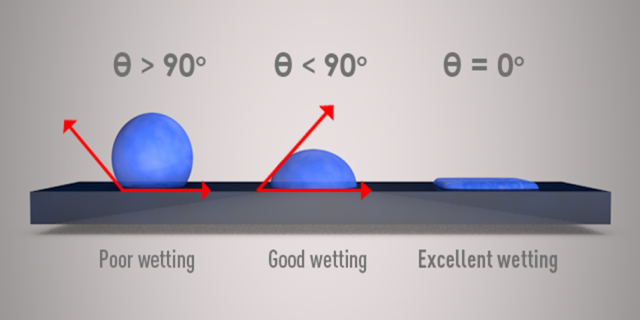Rock Wettability
Understanding Wettability in Petroleum Reservoirs: Video on YOUTUBE
Introduction:
Wettability is an important property of petroleum reservoir rocks. It refers to the tendency of one fluid to spread on or adhere to a solid surface in the presence of other immiscible fluids. In this blog, we will explore the concept of wettability and its significance in reservoir engineering.
We have released a lecture on rock wettability to the "Petroleum Knowledge Fields" YouTube channel. The video discusses wettability, which is the interaction of liquid and solid phases and is assessed by contact angles, which indicate complete wettability (zero degrees) or complete non-wettability (180 degrees). The video descuses that reservoir rocks' hydration capabilities toward fluids are critical because they influence fluid distribution in porous media. The video also classifies medium wettability as strong and weak wettability, strong and weak oil wettability, and mixed wettability. The humidification condition of tanks is determined by parameters such as oil composition, solid characteristics, brine composition and pH, pressure, temperature, and pink water layer thickness.
Understanding Wettability:
Wettability is determined by the interaction between fluid and solid phases in a reservoir rock. The liquid phase can be water, oil, or gas, while the solid phase is the rock mineral assemblage. To visualize wettability, we observe the behaviour of three droplets - Mercury, oil, and water - on a solid surface.When observing the droplets from the side, we notice that Mercury retains a spherical shape, the oil droplet develops an approximately hemispherical shape, but the water tends to spread over the glass surface. This spreading tendency is measured by the contact angle at the liquid-solid surface, which is always measured through the liquid to the solid.
As the contact angle decreases, the wetting characteristics of the liquid increase. Complete wettability is represented by a contact angle of zero, while complete non-wetting is indicated by a contact angle of 180°. Intermediate wettability is typically defined by contact angles ranging from 60° to 90°.
Importance of Wettability in Reservoir Engineering:
The wettability of reservoir rocks to fluids plays a crucial role in the distribution of fluids in porous media. The distribution is influenced by the wetting phase, which tends to occupy the smaller pores of the rock, while the non-wetting phase occupies the more open channels.
In a water-wet state, the rock surface has a preference for the water phase over the hydrocarbon phase. As a result, hydrocarbon phases (gas and oil) are contained in the center of the pores and do not cover any of the rock surfaces. Conversely, in an oil-wet state, the relative positions of oil and water are reversed. Hydrocarbon phases cover the rock surfaces, while water is contained in the center of the pores.
In an intermediate wet state, the rock surface has a preference for both oil and water phases. Neutral wetability occurs when the rock surface has an equal tendency for oil and water to wet it. Mixed wettability can be further classified into strongly water-wet, weakly water-wet, strongly oil-wet, and weakly oil-wet, depending on the wetting characteristics of the smaller and interconnected larger pores.
Factors Affecting Wettability:
The wettability of reservoir rocks is influenced by various factors:
- Oil composition
- Solid properties
- Formation brine and its pH
- Pressure and temperature
- Thickness of the carbonate water layer
Conclusion:
Understanding the wettability of petroleum reservoir rocks is crucial for effective reservoir engineering. Wetability determines the distribution of fluids within the porous media and affects the behavior of oil, gas, and water phases. By considering various factors influencing wetability, engineers can optimize the production and recovery of hydrocarbons from reservoirs.
Thank you for reading this blog. If you found it informative, please subscribe to our channel for more topics and lectures on reservoir engineering.





Comments